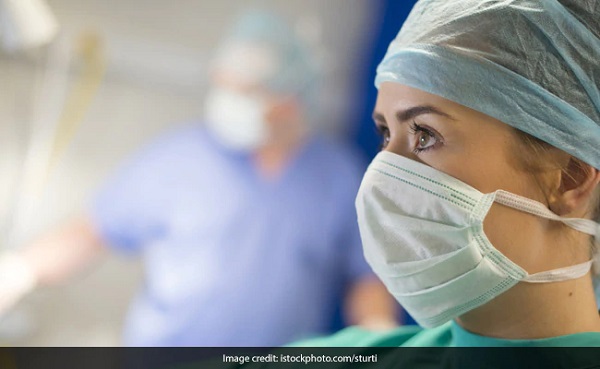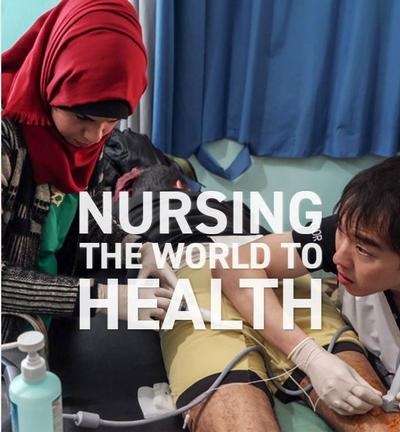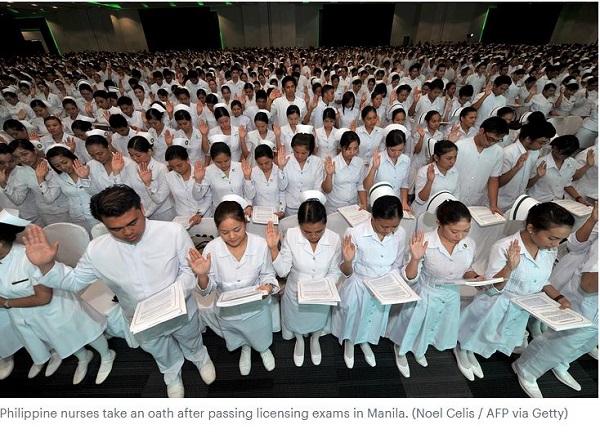
We’ve just had three reasons to celebrate the work of nurses:
- May 12 is the bicentenary of the birth of Florence Nightingale
- May 12 is International Nurses Day
- 2020 is the WHO Year of the Nurse and Midwife, to celebrate the birth of Florence Nightingale.
The International Council of Nurses has adopted the theme Nursing the World to Health.

I’d known that Florence Nightingale, the ‘Lady with the lamp’, had improved nursing standards out of sight during the Crimean War (1853-56). I didn’t understand that she had effectively founded modern nursing as a profession with the establishment of her nursing school at St Thomas’ Hospital in London, now part of King’s College London.
She was born into a well-to-do family, and as such was meant to grow up, get married, look ornamental and produce offspring. At that time there was no compulsory education in England and it was not thought worthwhile to educate girls beyond primary school.
Nightingale had other ideas. According to Wikipedia:
- Her social reforms included improving healthcare for all sections of British society, advocating better hunger relief in India, helping to abolish prostitution laws that were harsh for women, and expanding the acceptable forms of female participation in the workforce.
Nightingale was a prodigious and versatile writer. In her lifetime, much of her published work was concerned with spreading medical knowledge. Some of her tracts were written in simple English so that they could easily be understood by those with poor literary skills. She was also a pioneer in data visualization with the use of infographics, effectively using graphical presentations of statistical data. Much of her writing, including her extensive work on religion and mysticism, has only been published posthumously.
She is a link in the annals of feminism. I understand she was also the first to use pie charts and became a Fellow of the Statistical Society.
See was actually born Florence Shore, and named after the city of her birth, Florence, Italy.
Nursing, along with teaching, have long been useful professions of social mobility. On the one hand they have been open to the working classes, to improve their social status. On the other, becoming a nurse has been socially acceptable for the progeny of the upper classes. It is noteworthy that Nightingale’s mother opposed her taking up nursing.
Nursing in Covid 19 times
In recent times rich countries tend to depend on poor countries for a constant supply of nurses. The Atlantic has a sad story in an article The Fragility of the Global Nurse Supply Chain:
- Figures from New American Economy, a research and advocacy organization, show that 16.5 percent of all health-care workers in the United States are immigrants, with even greater representation in specific fields such as home health aid, where nearly 37 percent of workers are immigrants. And perhaps no place has played as large a role in this as the Philippines, which for decades has provided the nurses, porters, and aides who have formed the crucial infrastructure of hospitals, clinics, and other health-care facilities in wealthier parts of the world.
“Without the immigrant population right now serving in health care, the majority of these health-care industries would probably collapse,” Leo-Felix Jurado, the chair of the Nursing Department at William Paterson University, in New Jersey, and executive director of the Philippine Nurses Association of America, told me.
The article talks about a Filipino nurse who had worked for decades in the US. In mid-March she developed flu-like symptoms but could not get tested because she was told she didn’t qualify. Three weeks later, after multiple failed attempts, she died from Covid 19.
While we are told that the Philippines is itself short of nurses. Meanwhile:
- Nearly 70,000 nurses migrated from the Philippines for work from 2008 to 2012, government data show, and in 2017, the Washington-based Migration Policy Institute found some 145,800 Filipinos working as registered nurses in the United States. In Britain, just over 18,500 Filipinos work for the National Health Service, according to a parliamentary report published last year. Significant populations of Filipino nurses also work in Gulf states, such as Saudi Arabia, and in Japan, caring for the country’s rapidly aging population. Spain this month said it would fast-track Filipino nurses’ entry into its workforce to prop up its strained health-care system.
Where my sister is in Miles, a smallish country town, there are one or two there working in her aged care home.

Presumably, that would be the Nightingale Oath, taken pre-Covid 19.
Personal story
Like Boris Johnson, I have several stories etched in memory about nurses. The first was when I was at boarding school and had suffered the a bad dose of the mumps, after having been in bed for a week with the chicken pox. I had a raging fever, but the nurse we just called “Sister” decided she would look after me rather than send me to hospital. This involved six-hourly injections of penicillin. Sister had to walk right across the campus to deliver the jabs, day and night for four days during a February rain depression.
Her technique was to bunch up the skin, which is the opposite of the recommended method, thus concentrating the nerve endings. She hit me in the same spot on my rump 16 times in a row.
I recovered thanks to Sister’s ministrations, but had a sore backside for nine months. Other than that, Sister saved me although I lost about 10 pounds in the old money, and never again performed the triple jump which had been my best athletic event.
Ventilators
While we are here, this is an account I’ve received from an unknown nurse about what it’s like to be on a ventilator with Covid 19:
-
Here you go folks… for those people who don’t understand what it means to be on a ventilator but want to take the chance of going back to work….
For starters, it’s NOT an oxygen mask put over the mouth while the patient is comfortably lying down and reading magazines. Ventilation for COVID-19 is a painful intubation that goes down your throat and stays there until you live or you die.
It is done under anaesthesia for 2 to 3 weeks without moving, often upside down, with a tube inserted from the mouth up to the trachea and allows you to breathe to the rhythm of the lung machine.
The patient can’t talk or eat, or do anything naturally – the machine keeps you alive.
The discomfort and pain they feel from this means medical experts have to administer sedatives and painkillers to ensure tube tolerance for as long as the machine is needed. It’s like being in an artificial coma.
After 20 days from this treatment, a young patient loses 40% muscle mass, and gets mouth or vocal cords trauma, as well as possible pulmonary or heart complications.
It is for this reason that old or already weak people can’t withstand the treatment and die. Many of us are in this boat … so stay safe unless you want to take the chance of ending up here. This is NOT the flu.
Add a tube into your stomach, either through your nose or skin for liquid food, a sticky bag around your butt to collect the diarrhoea, a foley to collect urine, an IV for fluids and meds, an A-line to monitor your BP that is completely dependent upon finely calculated med doses, teams of nurses, CRNA’s and MA’s to reposition your limbs every two hours and lying on a mat that circulates ice cold fluid to help bring down your 104 degree temp.
Anyone want to try all that out?
Then stay home!
Stay safe and well!
By the way, the last Roy Morgan Survey of the Professions I can find was from 2018 when nurses topped the charts for the 23rd year in a row.

This stared as a simple reference to Florence Nightingale in the new Salon, then got a bit out of hand.
Bush Nurses had a good reputation in the NT. Practical, no bullshit, fitted the outback culture and had a preference for working in places where there was not a Dr to get in the way.
It is one of the reasons I am in favour of nurses taking over many of the things doctors have had the monopoly over for years.
I had a classic when I had to rush my daughter into emergency when she was a baby. This young woman appeared, doing up her buttons as she had obviously just woken up.
I said, “Can we see the doctor?” She said, “I am the doctor”.
But she didn’t seem to know what to do. Luckily an older woman appeared who did know what to do. She was the nurse.
Whatever the political or trade or financial repercussions may be,….
More than 100 countries will co-sponsor a motion calling for an independent inquiry into the coronavirus, clearing the way for the measure to pass the World Health Assembly.
In a major strategic victory for Australia, an updated draft motion will now be co-sponsored by 116 of the assembly’s 194 member states, according to sources familiar with the negotiations.
– Nine newspapers, 3.05pm, Victorian time today.
That’s a solid result for our Foreign Minister and PM.
Let the inquiry proceed.